Hoka One One Kawana Running Shoes Review
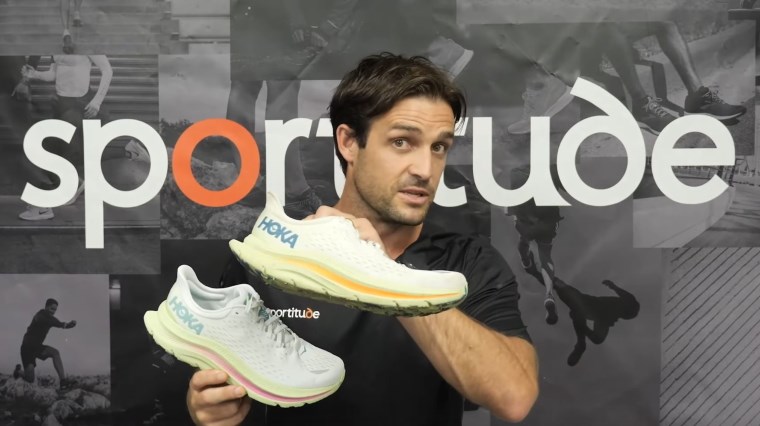
Josh reviews the all-new Hoka One One Kawana running shoes and shares his take on what makes it a potential favourite in your shoe rotation for high mileage running.
The Hoka Kawana provides a fresh spin on Hoka One One's 'super cushioned' reputation - trading in the traditionally soft feel underneath your foot for a firmer sensation to kick your running workouts up a gear.
A breathable engineered mesh upper provides a secure fit, being shallower than its family member the Hoka One One Bondi and with a feel that more closely resembles the Hoka One One Mach 4.
It cradles your feet in CMEVA foam for the ultimate blend of responsiveness and shock-absorbing compression that springs back to work after every impact for a snappy toe-off.
The engineering is targeted to a heel striker, but from Josh's experience after 50km out on the road it's clear that it also ticks the boxes of midfoot runnners - providing a smooth and stable sensation underfoot for neutral foot types.
Check out the full review with transcript below.
Hey guys, Josh here from Sportitude Running and it’s shoe review time. I'm going to be talking all things Hoka One One Kawana. The Hoka Kawana is a stable neutral high mileage shoe with a slightly different take on the engineering of its foam. If you’re looking for something with a little bit more pop through the forefoot the Hoka One One Kawana is something to consider.
In today's review we're going to dive into all the aspects; the outsole, the midsole and the upper. Without further ado let's get stuck in.
Runner Profile
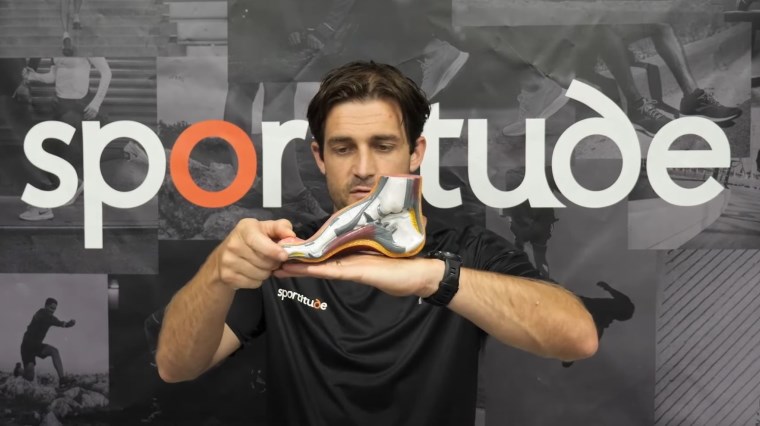
First things first, before we dive into the engineering aspects of the Hoka One One Kawana, let's profile the foot type that should be considering this shoe. It is a stable neutral shoe, suitable for foot types that don't have too much tendency to favour the medial side.
If you're looking at someone with a high arch and you put that foot on a flat surface in a static position, you'll see a little bit of space between the arch and the ground. Technically speaking this runner will have more of a supinator bias, so as they come through the gait transition more of the pressure will be towards the lateral side of the shoe as the foot engages and gets ready to transition through to the toe-off phase.
However, stable neutral also falls into a category that accommodates a foot type like mine. This is a foot type that when put on a flat surface the arch will be a little bit closer to the ground. Again, as this runner transitions through their gait cycle, the majority of the pressure will still be through the central part of the foot and if there happens to be a tendency to be biased towards overpronation it is OK. I am a mild overpronator and I've found the Hoka One One Kawana to be perfectly fine for my stability through my whole gait transition.
Upper
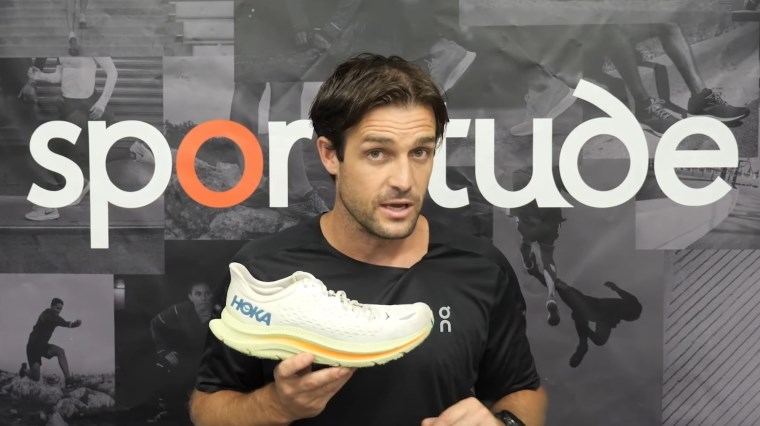
Pretty much from day one when I started reviewing shoes, I have gone from the outsole and worked my way up. I don't know what it is 2022, it feels like an exciting year so we're going to mix things up today.
I'd like to talk about the upper first up. Probably one of my favourite features of the Hoka One One Kawana was the fit, feel and the construction of the upper.
I hold the women’s model in my hand which is a little bit cleaner than mine which has seen some kilometres out on the road. With the upper we have an internal heel counter. It's a good structured system around the back of that Achilles which is going to give you a really decent lockdown around your heel.
The great thing about this running shoe is it still has that Achilles flare which we've seen consistently over the industry with nearly all brands offering some form of Achilles flare. Hoka One One have been doing it for a couple of seasons now.
The other thing I really liked about the fit of this shoe at the back was the memory foam. In the internal heel collar there's the perfect amount of memory foam, so a little bit of extra stitch lining on the inside of both the medial and lateral side of your heel. It provides a little bit more comfort and structure which is great. There is the extra eyelet at the back which you can go to to dial in that fit, be it a heel lock or runner's lock lace to give you a more secure fit.
As you're coming through to the tongue region, I noticed how thick the tongue was and initially before I put it on my foot, I thought that's probably going to be a little bit too much tongue. I didn't notice it once I got my foot in. It’s a good gusset deconstruction from the medial to lateral side that’s going to keep that tongue in a secure position not only for the performance of the tongue but obviously to keep you nice and stable through midstance as well.
Coming through to the forefoot there’s a breathable engineered mesh. It is a little bit shallower than most mileage shoes from Hoka One One, so for runners that are familiar with the Hoka One One Clifton and the Hoka One One Bondi fit and feel you'll notice those shoes to be a little bit deeper through the forefoot. The Hoka One One Kawana has a similar feel to the Hoka One One Mach series. It’s a little bit shallower through that front half and I really liked how this upper felt.
It’s only available in standard widths at this point in time. Being a new shoe that's no surprise. Most brands will only launch a new shoe in a standard width only. That's a B width in the women’s model and a D width in the men’s model and it’s true to size and width.
Outsole
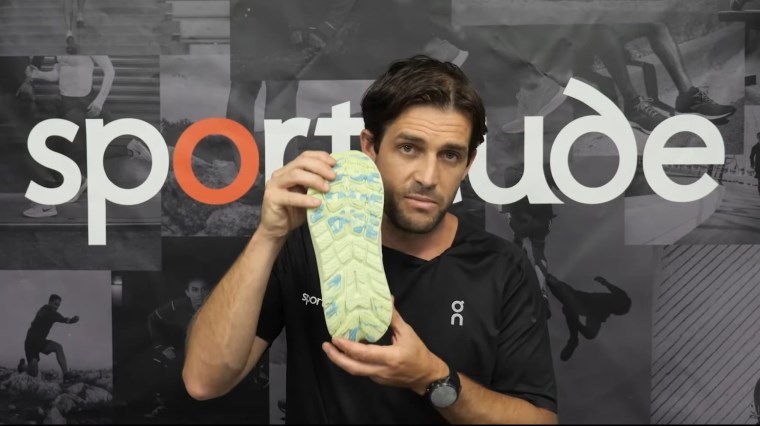
The next thing we'll talk about is the outsole. With this shoe there’s no surprises. Most Hoka One One shoes are pretty light when it comes to the outsole configuration. However, if you're putting this next to your Hoka One One Clifton, Hoka One One Rincon and potentially Hoka One One Mach - when you're lining them up next to each other although they are three completely different shoes, there is a little bit more rubber coverage underneath the foot itself.
When you're looking at the outsole of the Hoka One One Kawana you can see that marble coloured section through the forefoot. Hoka One One have placed the outsole on top of these decoupled pods through that forefoot so you get plenty of good coverage through the front half of the shoe.
I reckon it's going to be a slightly more durable outsole than what I've experienced previously with some Hoka One One running shoes which again is probably more to do with the midsole which we’ll get to in two ticks.
Coming back through to the rear of the shoe there is strategically placed hard wearing rubber at the back half of the shoe. There is a flared construction on that lateral side of that forefoot. That's SwallowTail geometry and we'll get to that in the midsole part of this review.
There is a little bit of exposed EVA through the mid-section. There's a bit of scuffing in my used pair where there is no rubber which is protecting that outsole. I don't think it's going to have any issues regarding performance longevity. It's a consistent thing with Hoka One One. They expose a little bit more of that foam which is OK, it reduces the weight and it's more to do with the performance of their Meta-Rocker which we'll touch on in the midsole part of this review.
In regards to the outsole it is important to note there is a little bit more surface area on offer as well. As you're coming through from the heel right through the midfoot and to the forefoot there's plenty of generosity with regards to how much platform you have underneath your foot which is a great thing.
Midsole
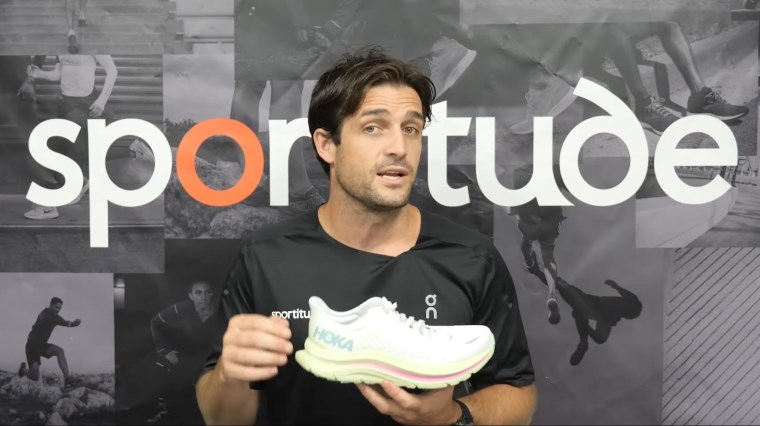
Let's dive in to the midsole because in my opinion this is where most of the magic occurs. Let’s talk about the foam itself. It is a new engineered foam from Hoka One One. It's just CMEVA and has some similar vibes to the Hoka One One Speedgoat 4 series. If you're a Hoka One One fan and you know that shoe, you get a pretty similar fit and feel regarding the compression of the midsole.
They have dialled it in a little bit to be more responsive through the forefoot. It's a completely new revamped midsole from Hoka One One and also the stack height is an interesting one too.
When you think mileage and Hoka you probably think of a really generous stack height. It is a little bit lower than what you would find with your traditional Hoka One One running shoes. For the stack heights in the men's model we’re talking a 30mm heel and 25mm forefoot for a variance of 5mm.
The women’s model is a little bit different though. The women’s model runs at 27mm in the heel and 22mm in the forefoot. It's keeping that heel-to-toe drop consistent with 5mm in both the men's and women's model, with just a slightly different take on how much shoe is underneath the foot.
The other biggest point of differentiation is the SwallowTail geometry. I touched on that a minute ago with the outsole discussion. There is a little bit more of a flare on that lateral side of the heel.
That's going to play a huge part for that heel striker that comes down wanting a little bit more compression. If you're looking for more cushioning, Hoka One One have been pretty clever.
Instead of making the foam softer at the back half of the shoe they've been really strategic with how they've executed that flare. It's going to provide an ample Crash Pad feel underneath the foot which is going to compress at the right amount. This is going to slow down that midstance velocity, get the foot ready to engage and toe-off through the forefoot.
While there is a bit of engineering or a lot of engineering thought for heel strikers, I am a midfoot striker and I have enjoyed every part of the Hoka One One Kawana from entry right through to the release.
The other noticeable discussion point which we need to talk about is the rocker. Hoka and rockers are two peas in a pod. We have to talk about that because if you look at your Hoka One One Bondi they have a late-stage rocker. Your Hoka One One Clifton has a slightly earlier stage rocker.
The Hoka One One Kawana is trending more towards a Hoka One One Bondi and has a slightly later stage rocker. However, because the foam changed with that new CMEVA it is a little firmer. What I found with this shoe and what most runners will find it is more responsive through the forefoot.
Again, traditionally speaking, when you're talking Hoka One One and talking mileage we don't tend to throw in that ‘responsive’ word into the discussion, it's more about cushioning and compression. However, this shoe here plays on that slightly snappier feel through the forefoot which again I've really liked.
Touching on the midsole and the surface area which we discussed in the outsole configuration, I like how this running shoe performs when I started to fatigue through the forefoot. In my longer runs once I get to about 12K depending on how I'm feeling on that day or what pace I’m running at, I'd personally like a little bit more real estate through the front half.
Holding up my used pair, having more surface area through the front just provided a little bit more stability as my foot was getting ready to toe-off. I really liked how this shoe felt through the forefoot. I have to say I like to have the original Asics Gel Kayano Lite felt as well and there's some pretty similar sensations underneath the foot. The Asics Gel Kayano Lite was a higher heel-to toe drop. However, I really feel this shoe has performed pretty similar to the Asics Gel Kayano Lite through that front half of the midsole.
The other thing I want to touch on which I did speak about it in the intro with the outsole is that there's a little bit more rubber on that forefoot. I feel that the decoupled lines that they have placed in this running shoe are more prominent than what I have found previously with a lot of Hoka One One out there. That's to aid in offering a little bit more compression in the midsole because the midsole is a bit firmer. You still need some form of protection, a little bit more help. That decoupled system underneath the outsole, especially at the forefoot, just aids in providing more compression.
Where the Kawana fits in the Hoka One One range
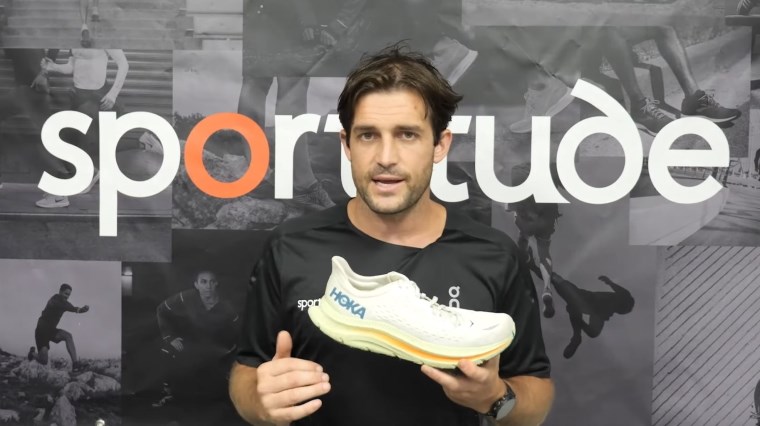
I want to give you a little bit more information about this shoe because it is new to Hoka One One, it's completely new to the running market and there's been a little bit of confusion about where this shoe would roll into your running shoe rotation.
To give you a bit of context around the stack height of this shoe, you have your Hoka One One Bondi 7 which sit around that 33mm heel and 29mm forefoot. The Hoka One One Kawana is 3mm lower with a 30mm heel and a 25mm forefoot for a 5mm drop. It’s very similar to your Hoka One One Clifton and your Hoka One One Mach. They're just 1mm variance with a 29mm heel and 24mm forefoot.
If you're looking at how much shoe is underneath your foot and you're pretty familiar with your Hoka One One running shoes, it's going to have a very similar stack to your Hoka One One Clifton and also your Hoka One One Mach.
If you're looking at mileage shoes, the Hoka One One Clifton, your Hoka One One Bondi and Hoka One One Arahi just to name a couple will sit in that silo. The Hoka One One Kawana does drop into your mileage silo however it is marginally heavier.
It’s really important to point that out because it’s one thing I noticed and as soon as I put the shoe on my foot. It felt a little bit more weighted. I don't think that's a bad thing which I'll tell you about in two ticks.
The men’s model is about 283 grams in a size 9 and the women’s model is around 237 grams for a size 7. If you're talking all things weights, it's still relatively light in the whole scheme of things.
There's certainly a lot more shoes that hit that 300 grams plus mark. However, when you're putting a shoe like this on your foot I think the consumers are going to want that Hoka One One Mach, Hoka One One Rincon or even a Hoka One One Clifton cushion-to-weight ratio underneath your foot and you're not going to get it.
It's going to feel a little bit more biased towards your Hoka One One Bondi however the performance of the midsole is one that you could certainly get a very similar read from a Hoka One One Mach and also some other shoes out there being your Brooks Glycerin 19 and also your Asics Gel Kayano Lite.
The Hoka One One Kawana is a new shoe and being a stable neutral offering from Hoka doesn't necessarily mean you're going to get a soft squishy feel underneath your foot. It's certainly playing right into that opposite sentence - it's a slightly firmer, more responsive and snappy feel under the foot.
Some reviewers have come out and said this shoe is really going to be one that's targeted for your athleisure runners. I totally disagree with that, I really think this shoe is going to perform quite well for someone who might be new to the brand.
If you're coming from a Brooks, Asics or a New Balance and you're wanting that lower heel-to-toe drop with still plenty of shoe underneath your foot but you're leaning on a little bit more weight in construction, I would throw the Hoka One One Kawana into the conversation.
It's going to perform really well for the right foot type and for that person that's happy to go a little bit higher in the 200 grams with regards to your men's weights and looking for a really smooth transition.
This running shoe is going to stay in my rotation until I completely burn them out. I've really enjoyed running in them.
The Wrap Up
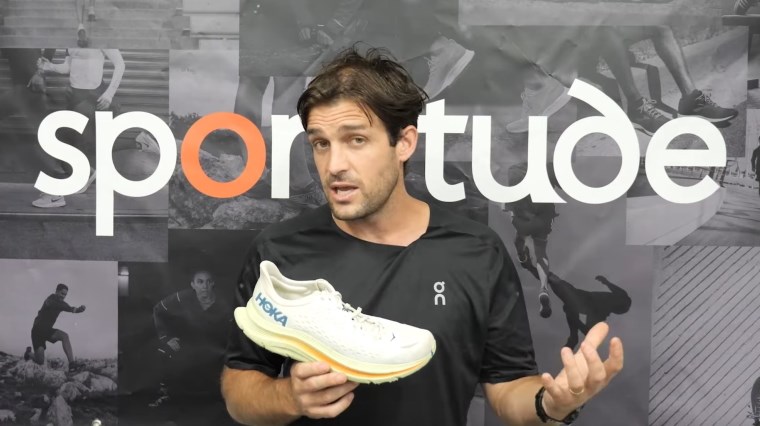
That's my take on the Hoka One One Kawana. If you have any questions, queries, theories, want to know more about the SwallowTail or if you've ran in a Hoka before and you're questioning whether this is going to be right for you, please contact our Sportitude shoe experts.
Please subscribe to the Sportitude YouTube channel because we'll keep pumping out shoe reviews for you the running community.
Until next time thank you so much for watching. Take care of each other and we'll see you on the road. Happy running!
FEATURES
Hoka One One Kawana
- Support: Neutral
- Upper: Mesh
- Midsole: Hoka One One CMEVA
Men
- Heel Height: 30mm
- Forefoot Height: 25mm
- Offset / Drop: 5mm
- Weight: 283g /10oz (US 9)
- Width: D (standard)
Women
- Heel Height: 27mm
- Forefoot Height: 22mm
- Offset / Drop: 5mm
- Weight: 238g / 8.4oz (US 7)
- Width: B (standard)
If you liked this, then you'll love:
What Type Of Running Shoe Is Best For Me?
Top 5 Stable Neutral Foot Types Of 2021
Hoka One One Bondi X vs Bondi 7 Comparison Shoe Review
